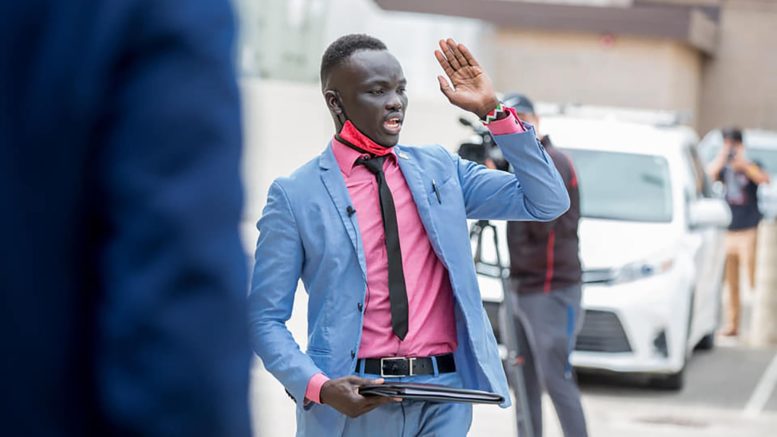Fifty years ago, lawmakers in Washington opened the doors to
immigrants from Africa. Today, dozens of new Americans — from
Liberia, Nigeria, Ethiopia, Somalia, and more — are running for
BY: Ibrahim Hiris Via Sahan Journal
Black immigrants are changing the Minnesota political landscape at a
pace never seen before.
Barely four years ago, the highest-ranking elected official in the
community was Abdi Warsame, a Somali immigrant who was sworn
into the Minneapolis City Council in January 2014.
Now, the state can count at least 13 Black immigrant elected officials,
including U.S. Representative Ilhan Omar; state Representatives
Mohamud Noor and Hodan Hassan; and Mayor Mike Elliott of
Brooklyn Center.
In the DFL August primary, a few more Black immigrants emerged
victorious. Among them are 30-year-old Omar Fateh, who will likely
win a seat in the State Senate; and 35-year-old Esther Agbaje who
secured another likely spot in the State House.
The surge in the number of Black immigrants seeking elected
positions is conspicuous not only in the Twin Cities metro area. It’s
also taking place outside the metro area, in cities like Mankato, St.
Cloud and Austin.
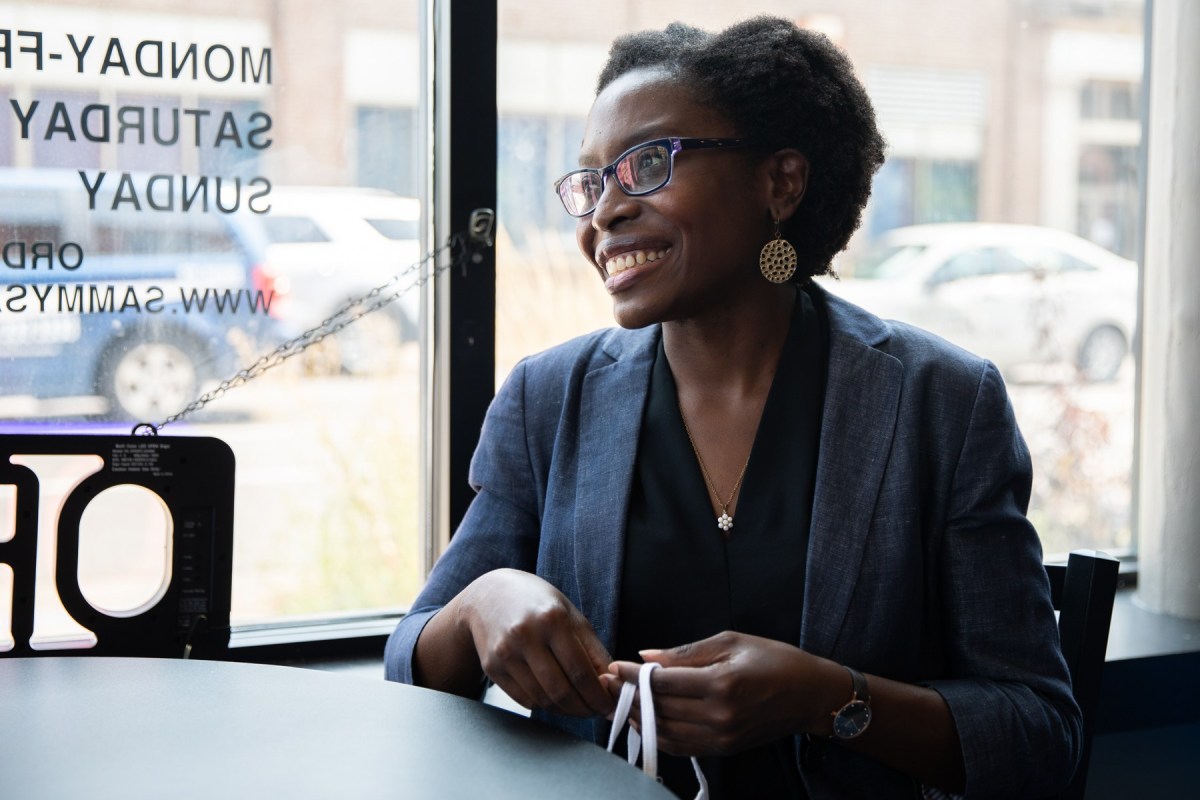
State demographer Susan Brower points to two factors possibly
contributing to the surge: First, the current political
climate—especially the anti-immigration rhetoric of the Trump
administration—is propelling them into action. Second, immigrants
who came to Minnesota decades ago have now become more
established and are stepping up to serve their communities.
In a sense, these new immigrant politicians are running for office
based on the civic values that first brought them here: equality,
inclusivity and opportunity. And yet they’re doing so at a time when
the current president and many of his followers seem to have rejected
immigrants and immigration as an American priority.
So what happened in immigration policy decades ago to open the
state—and the country—to immigration from Africa? And what
changed since then?
The first half of that answer is surprisingly straightforward. Near the
beginning of his presidency, Lyndon B. Johnson signed the
Immigration Nationality Act of 1965, which opened the doors to non-
European immigrants. But he could not have foreseen the full
magnitude of the impact the law would have on places like the Twin
Cities and beyond.
Moments before Johnson signed the landmark immigration reform
bill into law on Oct. 3, 1965, at the foot of the Statue of Liberty in New
York, he downplayed the effects the legislation would have on the
United States. “This bill that we will sign today is not a revolutionary
bill,” he reminded Americans during the signing ceremony. “It does
not affect the lives of millions. It will not reshape the structure of our
daily lives.”
The president was wrong.
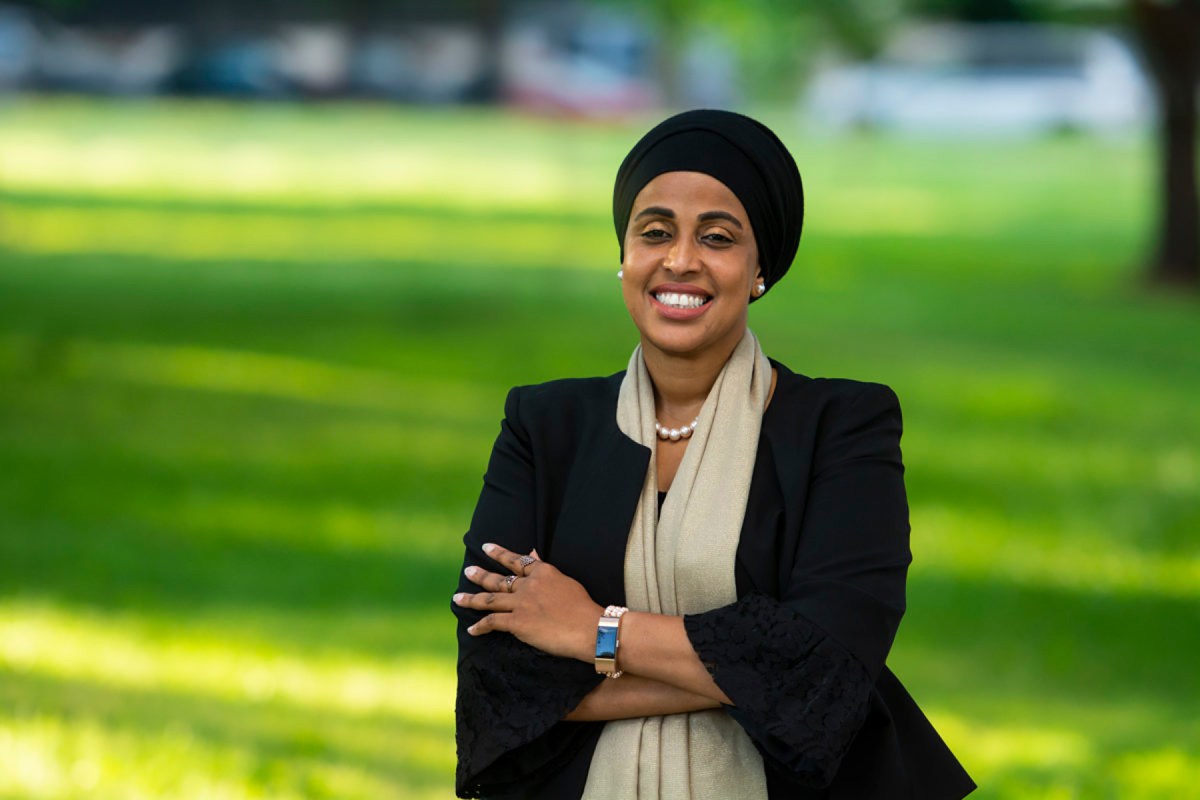
The legislation, also known as the Hart-Cellar Act, has affected
millions of lives. It’s changed the demographics of metropolitan areas
across the nation. It’s driven population growth as birth rates slow for
Americans. It’s provided a steady stream of labor for emptying
American farms and factories.
And now, in Minnesota, it’s drawing more Black immigrants to seek
political seats in federal, state and local governments. Since 2016,
according to an unofficial headcount by Sahan Journal, at least 50
African immigrants have run for public offices in Minnesota.
“Democracy works when people get involved,” said Yakasah Wehyee, a
Liberian-born Falcon Heights councilman and a Ph.D. candidate at
the University of Minnesota. “Our country is increasingly becoming
much more diverse than it has ever been. I think it’s important to have
people in elected office that reflect those demographic changes.”
Before the passage of Hart-Cellar 55 years ago, the U.S. government
favored immigrants from Western and Northern European countries,
following the Immigration Act of 1924. That meant, people from
places like Africa, Asia and Latin America were legally excluded from
the country.
Then in 1965, Congress and the Johnson administration repealed the
racist immigration law to make way for immigrants from non-
European countries. The motive behind the immigration reform,
however, wasn’t a sincere interest in restoring justice. It grew, in part,
out of Cold War political calculations.
University of Minnesota immigration history professor Erika Lee
expounds on this theory in her book The Making of Asian America: A
History. “At a time when the United States emphasized its virtues of
freedom and democracy over the totalitarianism of communism,” Lee
writes, “the unequal treatment of immigrants based on race exposed
the hypocrisy in American immigration regulation.”
An effort to reform the restrictive policy emerged during the John F.
Kennedy presidency. But the 35th president didn’t see his effort come
to fruition. In 1963, barely three years into his first term, JFK was
assassinated.
His successor, Johnson, took the helm to dismantle the Immigration
Act of 1924. And he succeeded. In a ceremony at the Statue of Liberty,
Johnson laid out the case against the old rules:
This system violated the basic principle of American democracy—the
principle that values and rewards each man on the basis of his merit
as a man. It has been un-American in the highest sense, because it
has been untrue to the faith that brought thousands to these shores
even before we were a country.
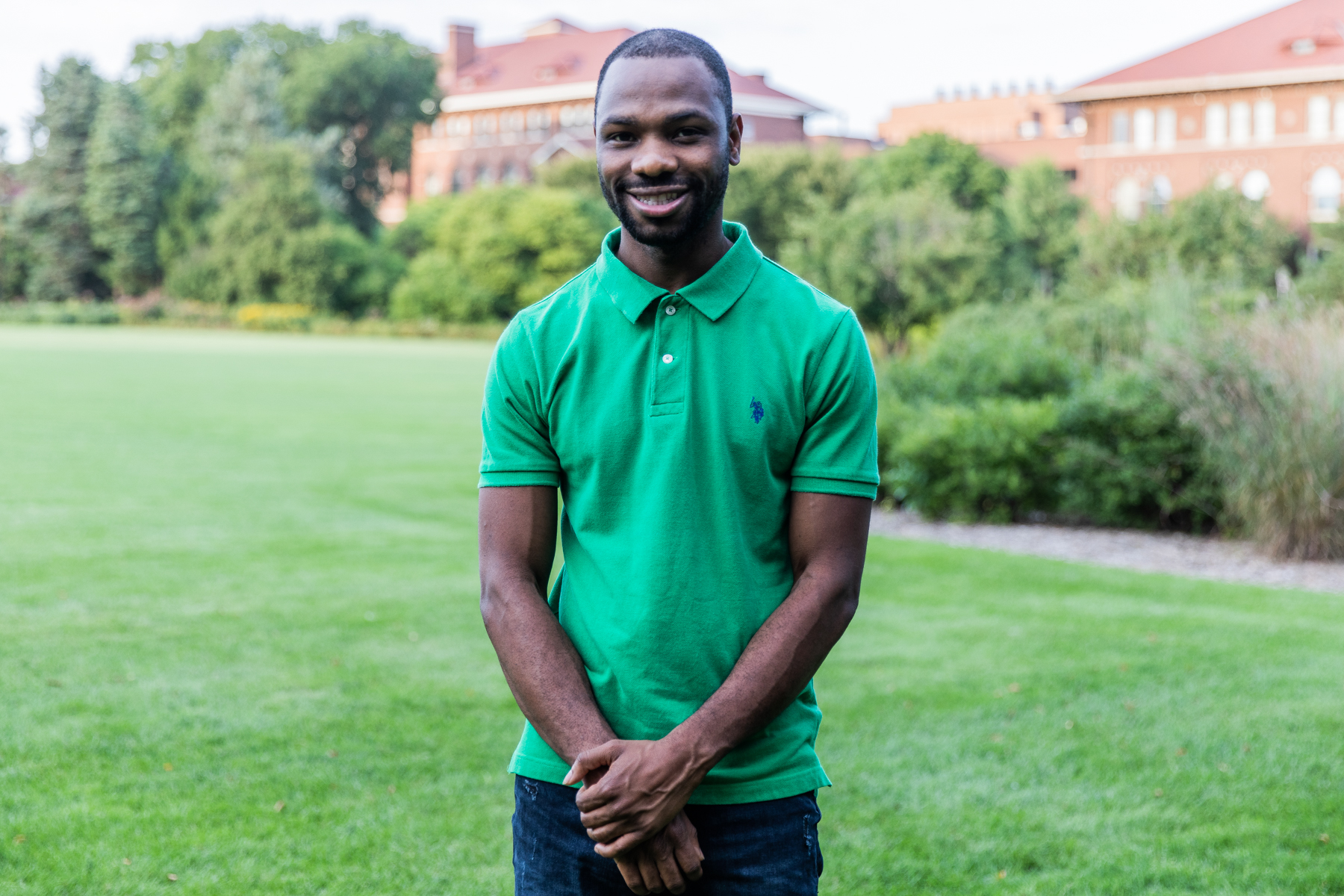
Johnson painted the U.S. as a nation of immigrants, even though the
country had long applied restrictive policies that barred people
deemed “undesirable.” That category including Italian and Eastern
European Jews, as well as Irish and Chinese immigrants. “Our
beautiful America was built by a nation of strangers,” he said. “From a
hundred different places or more they have poured forth into an
empty land, joining and blending in one mighty and irresistible tide.”
Johnson’s words echoed many that had come before. Thomas Paine,
the British-American philosopher, declared America “an asylum for
mankind” in his book Common Sense. Emma Lazarus, in her widely
celebrated poem “The New Colossus,” described the U.S. as a home for
the “huddled masses yearning to breathe free.”
JFK, in his 1958 book, A Nation of Immigrants, portrayed the U.S. as
a city upon a hill: “In my mind, it was a tall, proud city built on rocks
stronger than oceans, windswept, God-blessed, and teeming with
people of all kinds living in harmony and peace; a city with free ports
that hummed with commerce and creativity. And if there had to be city
walls, the walls had doors and the doors were open to anyone with the
will and the heart to get here.”
Departing from the professed ideology of Kennedy and Johnson,
Trump has made an immigration crackdown into his signature policy:
He signed an executive order banning travelers from Muslim-majority
countries; he called for building a wall along the U.S.-Mexico
boarders; he functionally ended asylum for those feeling violence; he
backed away from DACA and a path to permanent legal residency for
nearly 650,000 young Americans; he restricted legal immigration and
intensified deportation enforcement.
But many Minnesota immigrants still believe in America’s self-image
as the land of the free and a sanctuary for the masses fleeing violence,
tyranny and persecution in other parts of the world. To fill the void
that the current administration has left, Black immigrants are running
for political seats in Minnesota in high numbers.
Most of the first immigrants to arrive under Hart-Cellar were Asians
and Latin Americans. Though a slow trickle of African immigrants
came in the 1960s and ’70s, the majority arrived after the 1980s.
In 1960, the Immigration Policy Institute found 35,000 African
immigrants lived in the U.S. In 2018, that number had ballooned to
more than 2 million.
African immigration to Minnesota has followed a similar trend. In
1980, for example, there were 2,700 African-born residents, according
to Brower, the state demographer. In 2018, that number jumped to
more than 142,000. Most of these immigrants come from Somalia,
Ethiopia, Kenya, Liberia and Nigeria.
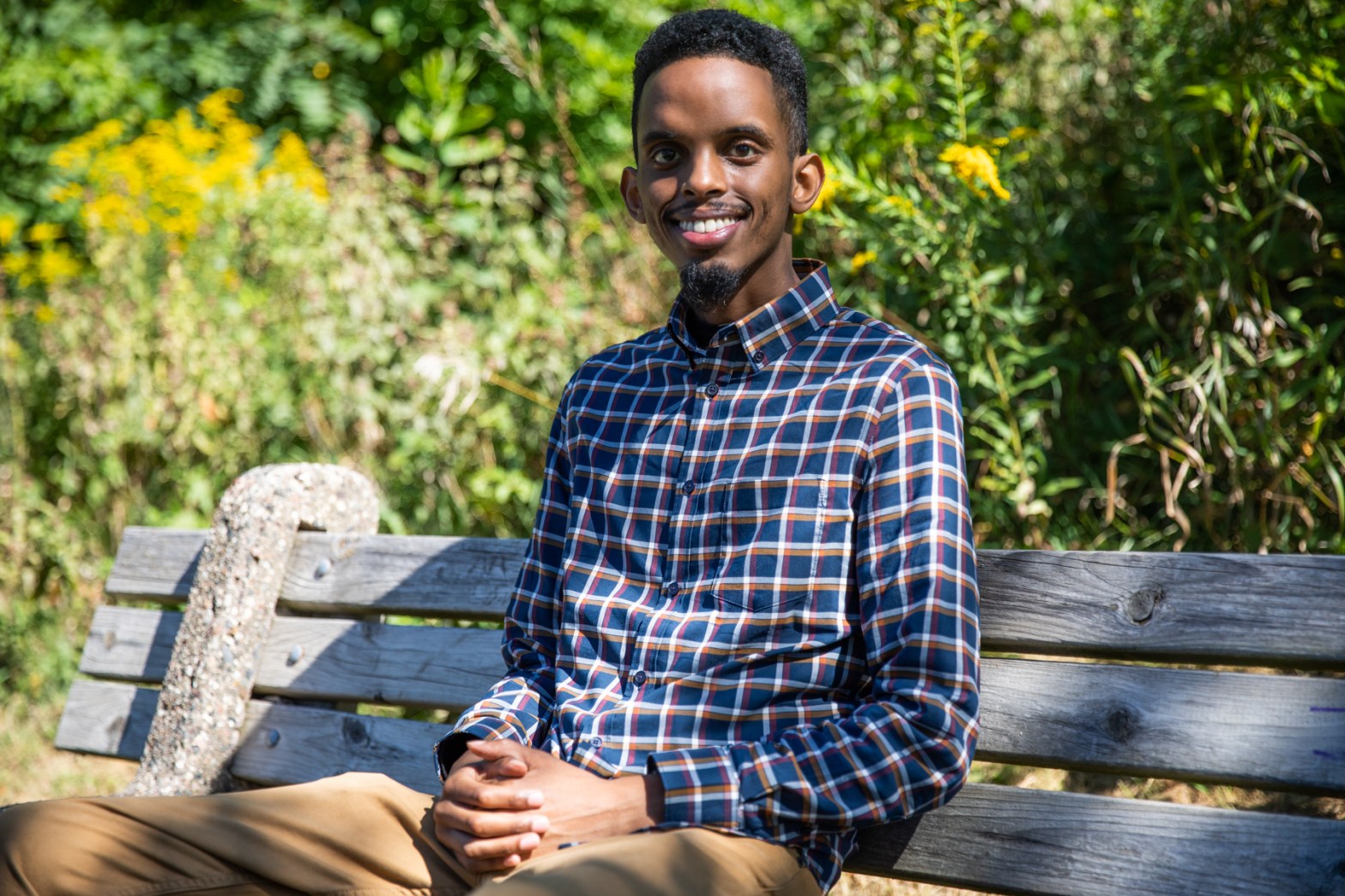
“I’m a Somali American and I’m a Black man. I was
born in America, but raised in an immigrant
household. That comes with the skills to be able to
communicate with multiple communities and be able
to bridge the gap between the immigrant and non-
immigrant communities, which is really needed in this
district.”
With at least 10 elected officials now serving various public offices,
Somalis make up the greatest number of Black immigrants becoming
elected officials in Minnesota. Most of them represent neighborhoods
that have large concentrations of foreign-born residents.
In south Minneapolis, for instance, Somalis have elected
representatives to a wide range of political offices. The most famous
official is, of course, Congresswoman Ilhan Omar, whose win in the
August DFL primary race for the 5th District likely secured her
another term in Washington.
In her first term, Ilhan made it a personal mission to rewrite the
Trump administration’s harsh immigration policies. “Oftentimes,
immigration issues only come to the forefront when there’s a big case
in the news,” she recently told Sahan Journal.
“We forget that there’s an ongoing struggle for many members of our
community,” she added. “So we use our office as the office that brings
attention to challenges that many members of our community have.”
A similar belief in community representation can be heard from Omar
Fateh, a business-systems analyst at the University of Minnesota and
the only U.S.-born Somali to run for public office in the state. Omar
appears primed to win the state Senate District 62 seat after emerging
victorious in the August DFL primary race against longtime African
American State Senator Jeff Hayden.
“I’m a Somali American and I’m a Black man,” Omar told Sahan
Journal. “I was born in America, but raised in an immigrant
household. That comes with the skills to be able to communicate with
multiple communities and be able to bridge the gap between the
immigrant and non-immigrant communities, which is really needed in
this district.”
Omar’s father, Mahmood Fateh, arrived in the U.S. in 1963 to study
civil engineering at Montana State University in Bozeman. He then
earned a master’s degree in transportation planning and engineering
at New York University.
In the same decade Mahmood was studying, the U.S. was approaching
a historic social and political crossroads. Intense protests spread,
seeking racial equality and opposing the Vietnam War. And high-
profile assassinations took the lives of JFK (1963); Malcolm X (1965);
Martin Luther King, Jr. (1968); and Robert Kennedy (1968)
“It was a turbulent period,” Mahmood said. “But it made me think
about race a lot. In Somalia, we were not aware of the issues of Blacks
and whites; we were in our own world. But after I had lived here for six
months, I started to think of myself as Black, an African. Not just
Somali.”
In New York City, Mahmood married a Somali woman, Amina Ali,
who would become Omar’s mother. The couple later moved to
Washington, D.C., where Omar Fateh was born.
In 1993, the family moved to Virginia.
Omar said he was first exposed to politics in 2008 as a senior at Falls
Church High School. His government teacher gave him an assignment
to interview a local politician about the issues he stood for. That
politician happened to be someone with a different political ideology
from Omar’s: He was a Republican.
“It really opened my eyes to the decisions that are made at the local
level,” Omar said. “That’s where I got my first engagement in politics. I
was just turning 18 at the time. I was going to vote for the first time at
the presidential election.”
Seven years later, in 2015, Omar ran for a seat on the Fairfax County
School Board. To win, he needed 80,000 votes. He got 11,000.
Later that year, Omar moved to Minnesota, home to the largest Somali
population in the country to pursue his political ambitions. In
December 2017, he announced a bid to run for House District 62A. In
the 2018 DFL primary, Omar lost the race to Hodan Hassan.
He didn’t quit.
Omar ran again in 2020. This time, against Hayden for the state
Senate District 62. On the August primary night, Omar defeated his
opponent by 1,600 votes.
The district covers south Minneapolis, which has been a centerpiece
for the estimated 74,0000 Somali immigrants in the state. It’s home to
Abubakar As-Siddique Islamic Center, the Village Mall (better known
as the 24 Mall), Karmel Mall, the Somali Museum of Minnesota and
hundreds of other small businesses.
Omar’s win follows his particular persistence and his political talents
as a community organizer. It also, however, matches the prominence
of Somalis in the Minneapolis business and public life.
The list of elected Somali officials gets longer each cycle: Mohamud
Noor and Hodan Hassan serve in the State House; Jamal Osman
recently won a special election for a seat to in the city council; Siad Ali
joined the city’s school board in 2014; and AK Hassan is a
commissioner on the Park Board.
But the Somali community has also gained a foothold more broadly.
Warsame, who resigned his post as a Minneapolis councilman early
this year, became CEO of Minneapolis Public Housing Authority. In
2019, Hamse Warfa joined the governor’s administration, becoming
deputy commissioner at the Minnesota Department of Employment
and Economic Development, (DEED). And in June, Anisa Hajimumin
became assistant commissioner at DEED.
“Democracy works when people get involved. Our
country is increasingly becoming much more diverse
than it has ever been. I think it’s important to have
people in elected office that reflect those demographic
changes.”
YAKASAH WEHYEE, A LIBERIAN-BORN FALCON HEIGHTS COUNCILMAN AND A PH.D.
CANDIDATE AT THE UNIVERSITY OF MINNESOTA.
Most of the estimated 20,000 Liberian Americans live in the
northwestern suburbs of the Twin Cities, including Brooklyn Park and
Brooklyn Center. Earlier this year, Yakasah Wehyee, the Ph.D.
candidate at the University of Minnesota, took office as a city council
member in Falcon Heights.
Wehyee was born in Liberia’s capital city, Monrovia. In 1997, at age
six, he came to the U.S. with his aunt, who raised him in north
Minneapolis.
He studied political science and history at Hamline University and is
currently pursuing a doctorate in political science and international
relations at the University of Minnesota.
In 2016, a police officer shot and killed Philando Castile, a 32-year-old
African American man, during a routine traffic stop in Falcon
Heights.
“The community was still struggling with how to come together and
deal with that incident and identify pathways forward,” Wehyee said.
“I wanted to be a part of those conversations; I wanted to be a part of
the healing process.”
And so, he ran for the council.
When Election Day came in November 2019, Wehyee claimed one of
two open seats. “I’ve always had a passion for public service,” Wehyee
said. “I’ve always wanted to get involved and lend my service to
bettering the community. That has always been my outlook.”
Most of the work at the city council revolves around the typically
mundane local issues: approving the city budget, amending old
ordnance and writing new one, debating plans to restructure the city
departments and voting on road construction and repair projects.
But Wehyee sometimes brings a different and unexpected agenda.
He’s now leading an effort to make Falcon Heights a sanctuary city.
This would involve passing an ordinance that seeks to protect
undocumented immigrants. The ordinance would make it harder for
law enforcement to question subjects about their immigration status
and prohibit city employees from cooperating with agents from the
Immigration and Consumes Enforcement, or ICE.
“I’m extremely proud of that,” he said. “That’s the big thing I’ve
personally been pushing forth.”
olitical observers may expect Somalis and Liberians to win some races
in cities with large immigrant populations. But African immigrants
have started to run for office farther afield, in places like St, Cloud,
Mankato, and Austin.
In Austin, Oballa Oballa, 27, is busy these days putting up campaign
signs and knocking on doors for his bid to join the city council.
A health unit coordinator at Mayo Clinic in Rochester, Oballa decided
to run for the post after noticing a growing number of immigrants and
refugees from Africa. Most of these residents have come from places
like Sudan, Ethiopia, Togo, the Ivory Coast, Benin and Liberia.
Oballa, too, is an immigrant. He and his family fled their home in
Gambella, Ethiopia, in 2003. Violence erupted in the region, leaving
more than 400 dead and 10,000 displaced. After weeks on the road,
Oballa said, he and his family arrived in Kenya’s Dadaab refugee
camp.
In 2013, after a decade in the camp, Oballa arrived in the U.S. through
the refugee resettlement program. He briefly lived in Maryland and
South Dakota before permanently establishing a home in Austin.
“This is the city I wanted to live in,” he said. “This is the city I wanted
to raise my kids in.”
This, too, is the city where he wants to make his political mark. Barely
six months after he became a naturalized citizen in December 2019,
Oballa announced his candidacy.
Oballa’s platform would seem broadly appealing. If elected in
November, Oballa said, he’ll focus on expanding the Austin economy,
attracting high-paying employers and creating workforce training
programs.
“Our local businesses are essential to the fabric of our community,”
Oballa said. “We should support them in every way possible to ensure
that they have the best opportunities to survive, thrive and grow.”
Oballa, in addition, wants to make affordable housing more accessible,
connect working parents to daycare centers and encourage young
immigrants and refugees to become active members in the city.
“I want to inspire other immigrant kids and refugees,” he said. “Most
of the refugees, when they come to America, don’t consider themselves
as full members of American society.”
If he wins, Oballa will not only become the first of the state’s estimated
24,000 Ethiopians elected to a public office in Austin. He will be the
first Black person to do so.
The Hart-Cellar Act allowed millions of non-European immigrants to
establish permanent homes in the U.S. While Black immigrants make
up only 2.5 percent of the state’s population overall in the state, the
majority of these residents are concentrated in the Twin Cities metro
area.
That concentration has given them not just the political will—and a
voting bloc—to pursue state and local elected seats. It’s also allowed
them to establish successful businesses, vibrant social hubs, schools
and religious centers: institutions that have given Black immigrants a
true sense of belonging.
These candidates don’t just represent African immigrants in the
mainstream of Minnesota civic life. Rather, people from Somalia,
Liberia, Ethiopia and more have become the mainstream itself.
BY: Ibrahim Hirsi: Sahan Journal

